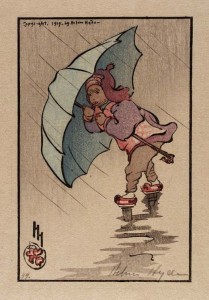Overcast this late-afternoon Saturday here in California’s Central Valley, a set-up for the massive rainstorms coming tomorrow and lasting through Monday — an early-in-the-season ‘atmospheric river‘ is expected to dump 1.5-to-2-inches of rain on us here in the lowlands, snow and even wetter in the foothills and mountains.
We’re duly warned:
??A HIGH Risk of Excessive Rainfall is in effect for portions of Northern California tomorrow. A strong atmospheric river will produce rainfall of 8-10 inches in the region, leading to significant and life-threatening flash floods and mudslides, particularly over burn scar areas. pic.twitter.com/FvACBTpNID
— NWS Weather Prediction Center (@NWSWPC) October 23, 2021
All that rain will pose immediate problems in the wake of the drought we’ve suffered the last few years, especially the last two and the dry, parched ground which may/may not handle all the moisture. Nutshell info (MarketWatch)::
As of Oct. 19, 38.9-percent of the U.S. and 46.5-percent of the lower 48 states are in drought, according to the National Integrated Drought Information System, which is part of the National Oceanic and Atmospheric Administration (NOAA).
…
Even with rain falling this week, California Gov. Gavin Newsom reupped the statewide drought emergency and gave regulators permission to enact mandatory statewide water restrictions if they choose.
The move was a reminder that drought conditions are the product of climate change, and less impacted by short-term weather changes.For decades, California has relied on rain and snow in the winter to fill the state’s major rivers and streams in the spring, which then feed a massive system of lakes that store water for drinking, farming and energy production.
The annual runoff from the mountains is getting smaller, mostly because it’s getting hotter and drier, not just because it’s raining less.
For instance, California’s snowpack in the Sierra Nevada mountains earlier this year was 60-percent of its historical average. But the amount of water that made it to the reservoirs was similar to 2015, when the snowpack was just 5-percent of its historical average.
This past year, California had its warmest ever statewide monthly average temperatures in June, July and October 2020. Water is evaporating into the hotter air or was absorbed into the drier soil, which is true across the arid Western U.S.California’s 2021 “water year,” which just ended, was the second driest on record.
A year earlier was the fifth driest on record. The cumulative effect leaves reservoirs at record low levels.
State officials are already predicting that the Lake Mendocino reservoir could be dry by next summer.
And in my neck of the valley:
A strong storm system will impact Central California Sunday evening through Monday, resulting in widespread precipitation. Most of this precipitation will fall late Sunday night and Monday morning. Debris flow flooding is possible in recently burned areas. #CAwx pic.twitter.com/kYf5T8Bo4G
— NWS Hanford (@NWSHanford) October 23, 2021
Rain’s impact in this case is not so much in rainfall, but the drought — via the Merced Sun-Star last Thursday:
Meteorologists are anticipating the strongest storm in two years to sweep the San Joaquin Valley come Sunday — but that doesn’t mean the inbound forecast is anomalously powerful compared to historical weather conditions.
“It just speaks to how bad the last two years have been,” said Andy Bollenbacher, a meteorologist with the National Weather Service’s Hanford office.
“It doesn’t really speak to the storm being abnormally strong, just how weak and dry our last two years have been.”
…
The inch and a quarter of rainfall projected to land in Merced between Sunday and Monday won’t be enough to put a dent in the dry conditions.
“It will help, but you’re going to need a couple more storms for (Merced) to see a meaningful difference,” Bollenbacher said.
And a couple of rain songs– the first, a sad, mocking of California:
Another sad, poetic, but mental-divergent outlook:
On that note — once again, here we are…
 (Illustration out front: ‘The Blue Umbrella,” (1914), color woodcut on paper, by Helen Hyde, and found here).
(Illustration out front: ‘The Blue Umbrella,” (1914), color woodcut on paper, by Helen Hyde, and found here).